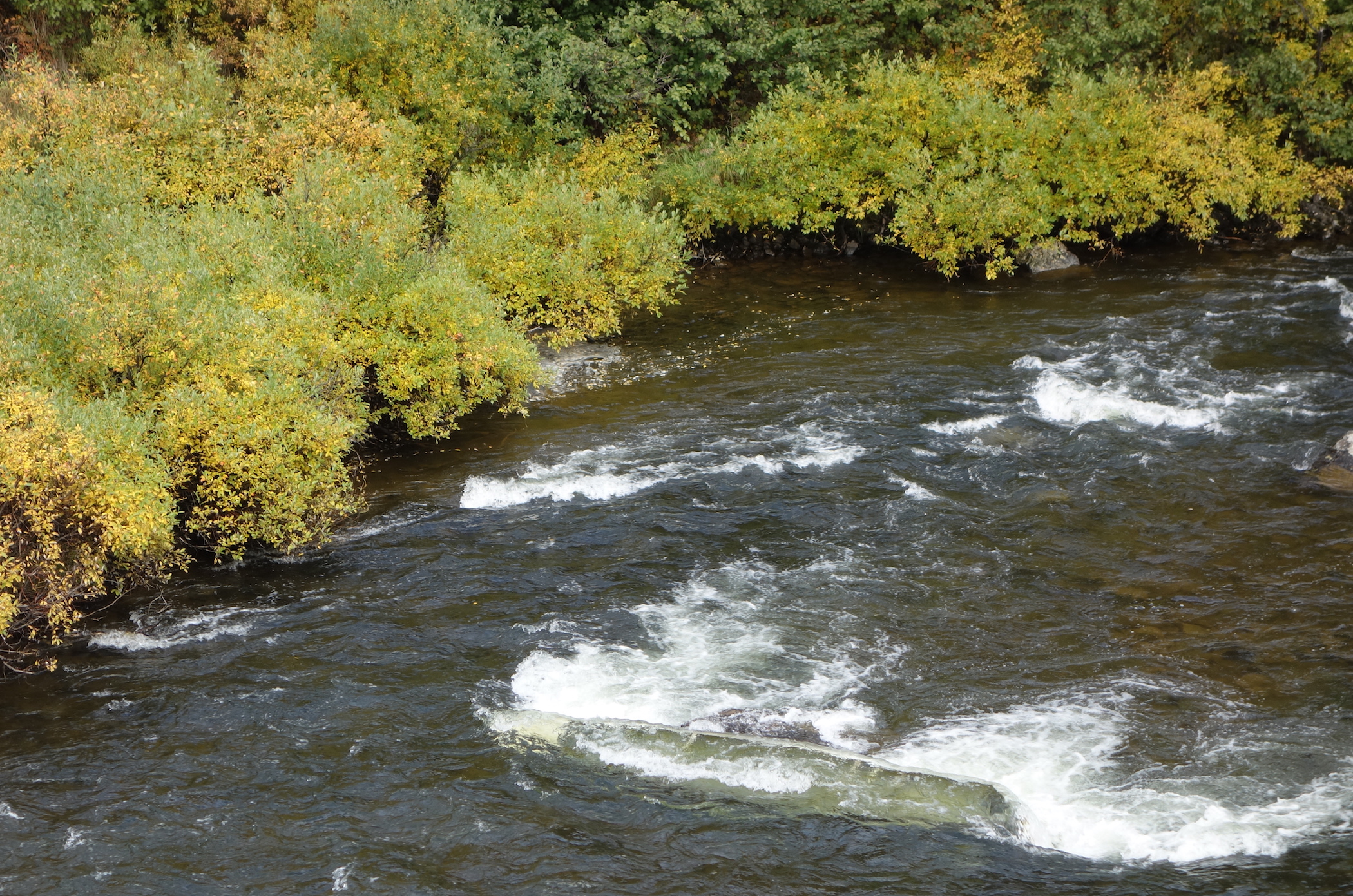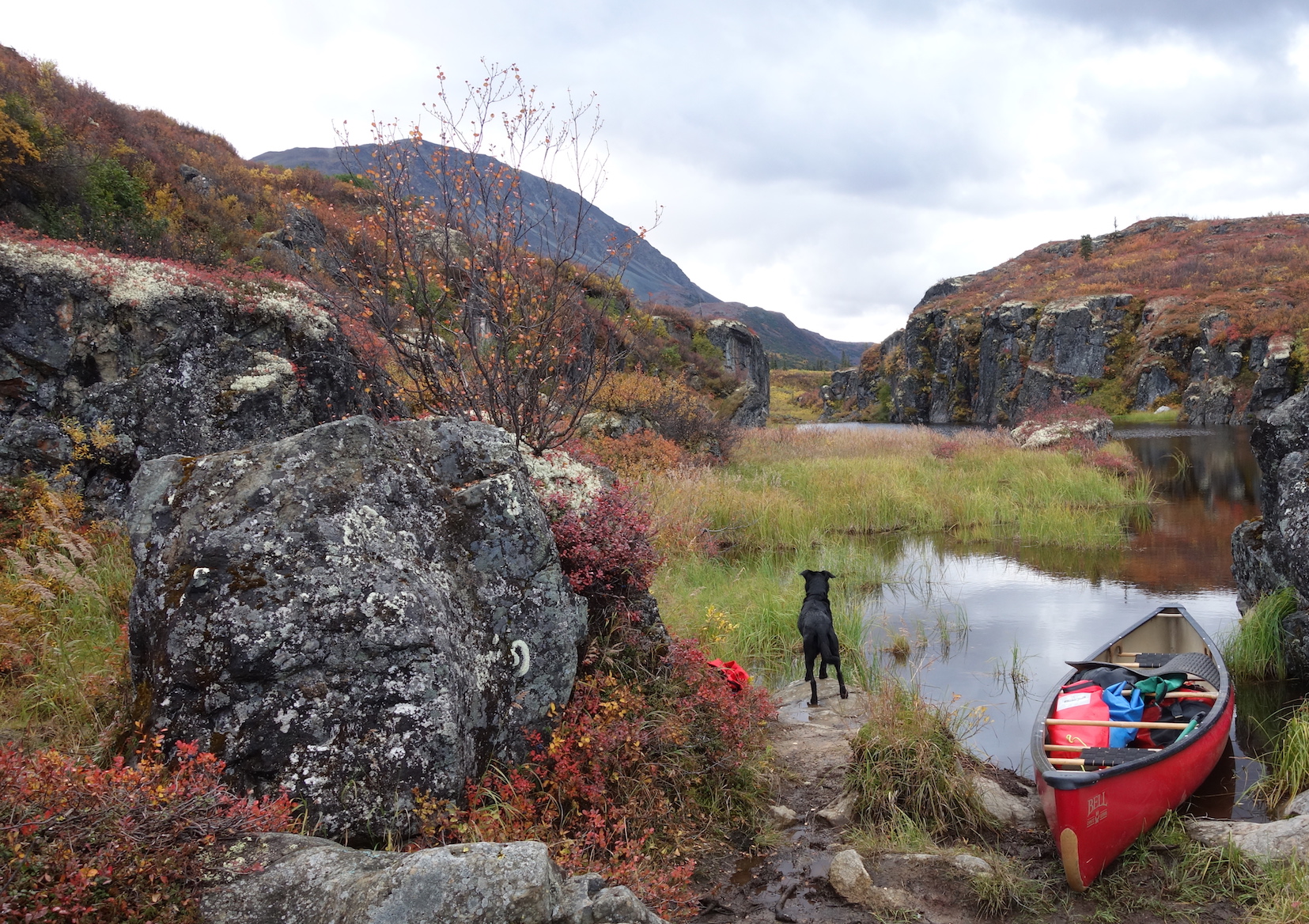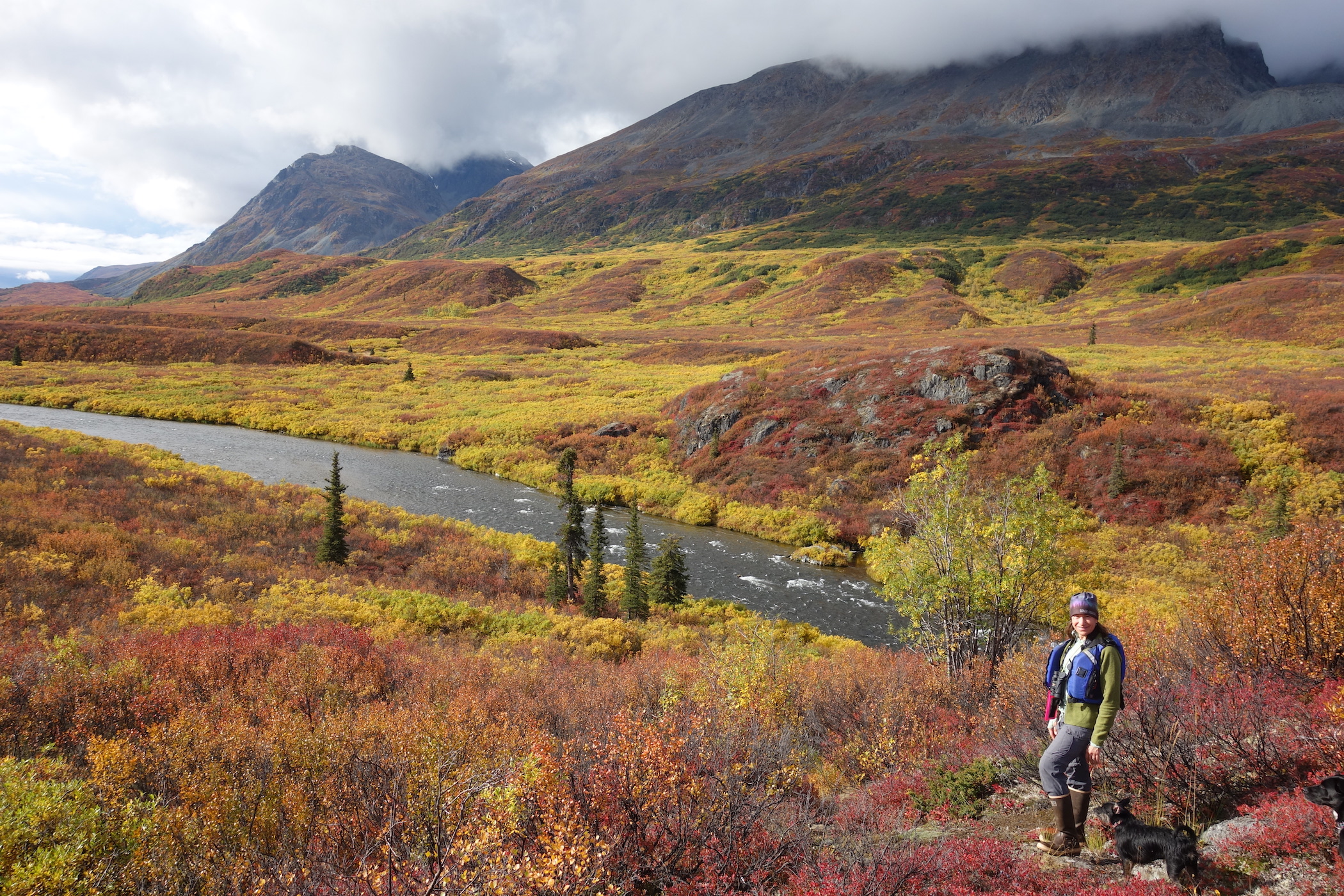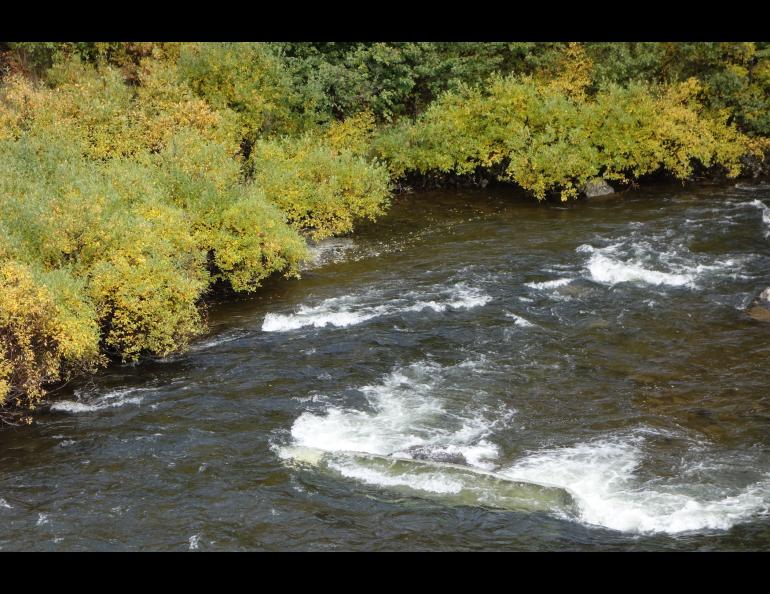
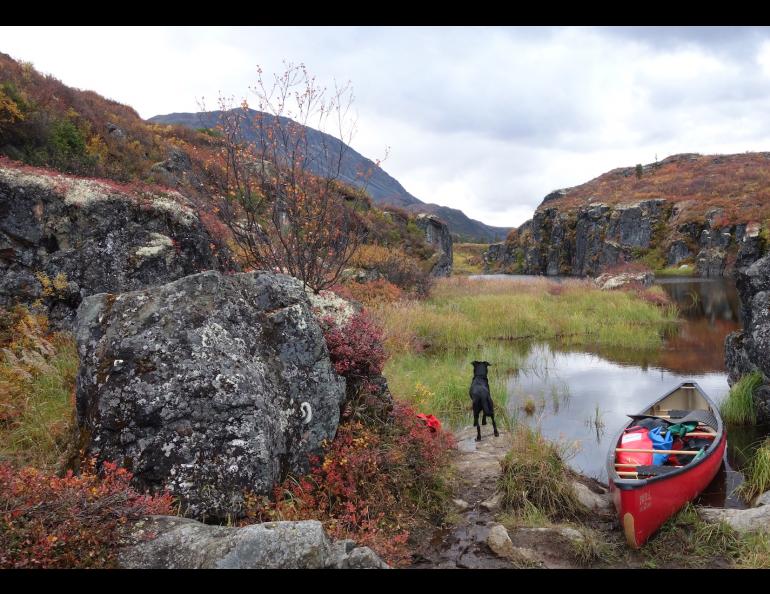
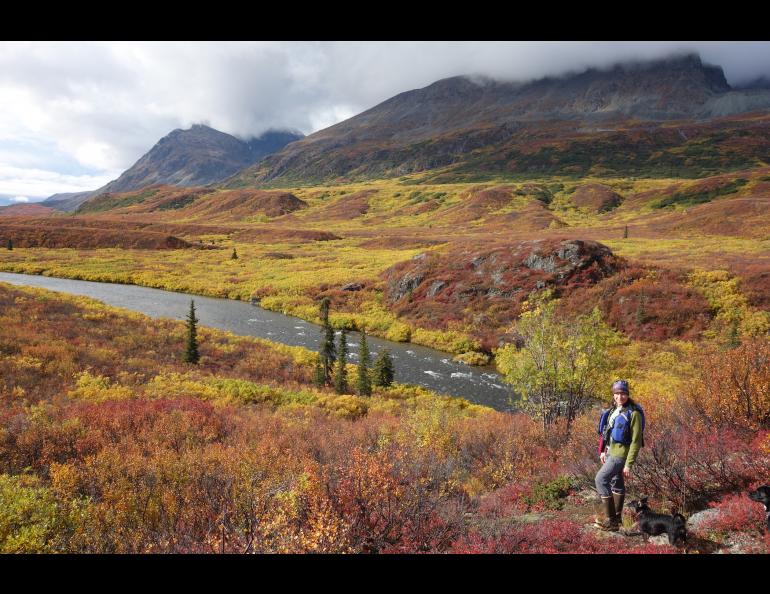
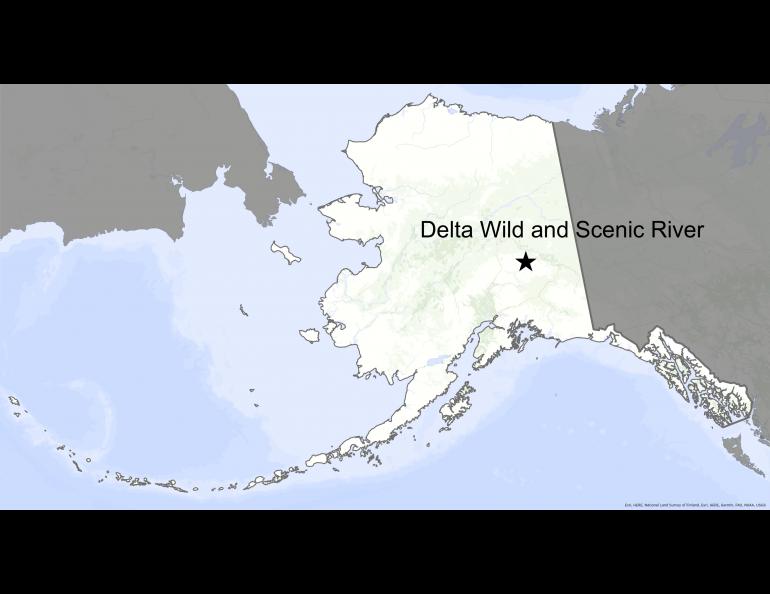
Plastic ingenuity provides safe river exit
Our Labor Day canoe trip went a day long, and almost a boat short.
With our daughter traveling with teammates for a high-school cross-country meet, my wife Kristen and I had a long weekend together. We chose to paddle our canoe down the Wild and Scenic River portion of the Delta River, which neither of us had floated.
In the center of mainland Alaska, with our two dogs on board, we dipped our paddles in the stillness of Round Tangle Lake, surrounded by orange and red tundra. We were in the Tangle Lakes Archaeological District, where professionals have found hundreds of ancient house pits concentrated in this area about 10 times the acreage of Fairbanks.
We camped for a night beneath Sugarloaf Mountain, where the skinny Lower Tangle Lake bends the weeds northward in becoming the Delta River.
The river there shows a quirk, shared farther west by the Nenana River: It begins life on the south side of Alaska Range and flows through the mountains to the north side. However it happened, both waterways have followed a corridor through which people (and later cars and trucks) have moved for thousands of years.
As we cut through hills decorated in fall’s neon colors, we pulled over in order to carry our boat on a short portage path around a waterfall. The other side of the hundred-yard boat-carry is where our unintended adventure began.
Our first clue to the character of the upper Delta River was a cigar-shaped obstacle in the water right after the portage. I stared for a few minutes before I realized it was an aluminum canoe, pinned to a rock beneath the water’s surface.
We re-packed our boat and climbed a rock to get a better view of the river downstream of the submerged canoe. I felt the tingles from the roar of water into which you are about to slip your boat.
Kristen and I chose a line of dark water that allowed us to avoid the sunken canoe and shoot downstream. I was in the back (the stern), doing most of the steering.
Our boat is a red Bell canoe made of a material called Royalex. The canoe company no longer exists, and no one these days manufactures the foam core sandwiched between plastic sheets that makes up the hull of the canoe. An engineer for Uniroyal Tire Company invented Royalex, which canoe-makers discovered they could heat and stretch over a canoe-shaped mold.
The Bell has carried us the full 550 miles of the Tanana River and has endured being dragged over rocks while filled with bags of moose. Its front seat was a nice spot for our four-year-old to nap on her first Yukon River trip. That’s why I felt so bad at what happened next.
We shoved into the water and I stepped into the back, sitting down with my paddle in hand.
We zipped past the submerged canoe, loving the feeling of rushing through that colorful, fresh-smelling country. We pulled out at an eddy to look at the river downstream.
We saw a route between rocks and agreed to stay in a lane of black water with no white on top.
As we cruised along an outer bend of the river free of toothy rocks, it reminded me of the Chatanika River north of Fairbanks, a much gentler stream. I thought we were through the worst of the mile-long rock garden that friends and guidebooks had warned us about.
After sweeping around that bend in the fast water, we saw rocks in our path. Soon, the boat was lurching up on a rock, like an alligator sunning itself.
In slow motion, the canoe pivoted sideways to the current. I then dimly remembered the non-intuitive advice from my friend Larry Fogelson: Lean toward the rock, to keep rushing water from coming into the canoe.
That memory came too late; we leaned back. Water spilled over the rim of the boat. The canoe became a bathtub.
Pepe, our Chihuahua mix, was the first to abandon ship. We are not sure if he jumped or was shaken off, but we saw his little black head bobbing away downstream.
Kristen and I could both stand on the rock that pinned the canoe, with water rushing by us. The boat was looking more like a boomerang every second as the current shoved it around the rock.
Cora, our Lab/blue heeler, stayed perched on the only dry bag that was not floating on a rope tether. I lifted her off the bag and set her in the water to swim for shore. She paddled furiously through the white foam, shaking herself on dry muskeg a few seconds later.
I looked down at the canoe, then bent with deep creases in its plastic/foam hull. How much more push could it take?
It was a bad situation, but we felt a little better when Pepe showed up in the brush 15 feet away from us on shore.
“I don’t know what to do next!” I yelled over the roar to Kristen, who stood next to me on the rock, water rushing around her waist.
“The throw-rope,” she shouted back, reminding me of the 50-foot nylon rope attached to its own storage bag. “I’ll use it to get to shore and then get our gear off the boat.”
To compress a lot of stressful time into a sentence, that is what we did. With Kristen on shore throwing me the rope bag again and again, we recovered everything except a paddle, our little shovel, and a foam mat the dogs were sitting on. All those things escaped downstream.
I was then standing alone on the rock, just downstream of the pinned canoe. Water rushed over my lower half, destroying my pocket camera (but not my satellite texter, which proved it was waterproof in the other front pocket).
As I was tying all our stuff to the rope for Kristen to pull to shore, I shot glances at the white inner skin of the folded boat. It was creased like my grimacing face, but I did not see any holes.
I suddenly remembered something Ev Wenrick, who sold us the boat 20 years earlier, had said.
“This Royalex can bounce back if you taco it over a rock.”
Before I grabbed the throw-rope to let it swing me to shore, I tied the far end of the rope on a thwart — a narrow board that runs the width of the canoe just in front of the stern paddler’s feet.
I then inched across the rock toward the middle of the river. With both hands, I yanked the far end of the boat for leverage.
The canoe moved a few inches and then lurched free, like a sodden log. I climbed over it, caught the upstream end of the rope and held on for a Tarzan ride to shore in my lifejacket, not bouncing off as many rocks as Kristen had.
I stepped out dripping on the steep bank.
The water-filled canoe followed, swinging downstream. The rope, which Kristen had tied off to a broomstick willow, tightened and held the jerk of the boat, heavy as a walrus.
After we switched into dry clothes, we pulled the canoe out, setting it upside-down onto a large rock. The boat was squashed, but it was no longer curved like a banana.
After a night under a tarp trying to keep from sliding down the steep slope with the dogs, we woke to rain in the morning. We looked at the canoe. To our amazement, it had puffed back into its torpedo self.
Despite bearing a few scars on its pretty face, the hull was rigid. There were no holes. Running my hands over the scars, I was confident the boat would handle as it always had.
Kristen was not so sure. But with dozens of miles of bushwhacking to get to the nearest road, the Bell was our ticket out.
The next day, after dragging the canoe and all our gear through the brush upstream of the rock that pinned us, we were nervous as we packed the boat in a small eddy.
Pointing upstream, we breathlessly ferried the canoe across the river to the more mellow side. Then, I used the tow rope to line the canoe another half-mile downstream, walking in the water with my rubber boots while guiding the boat along like a dog on a leash. Kristen and the dogs busted through the brush alongside me.
When the river widened and there were fewer rocks, we all re-entered the canoe in a patch of quiet water.
For the rest of the 20 river miles, the canoe performed as it always has, responding to the turn of a paddle and ferrying across the river crisply when set at the proper angle. Hunters who watched us float by had no idea of what that boat had been through, except if maybe they noticed the wrinkles on its cheeks.
A few days later, Kristen and I are still wired from the experience, humbled by the river, and appreciative of clever people who once molded strong, resilient things out of plastic and foam.

